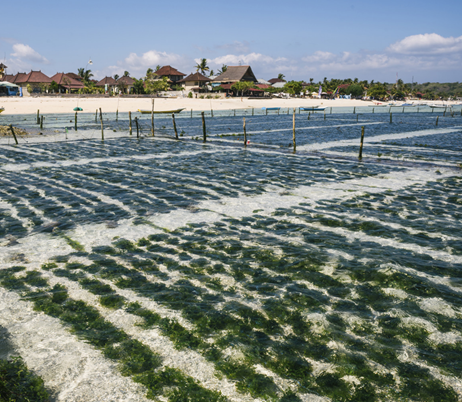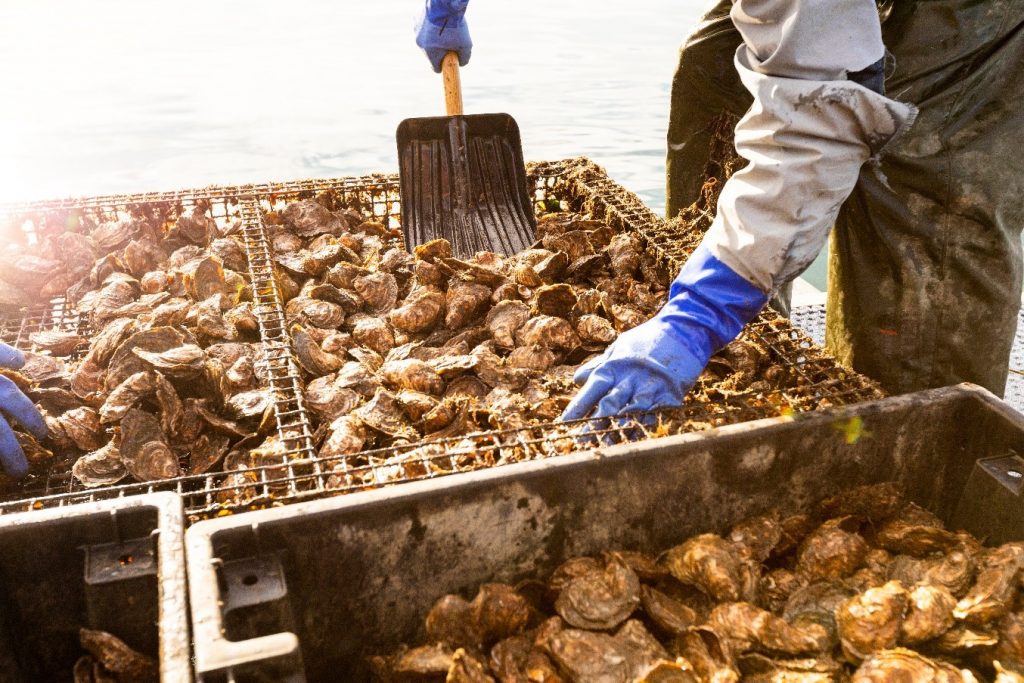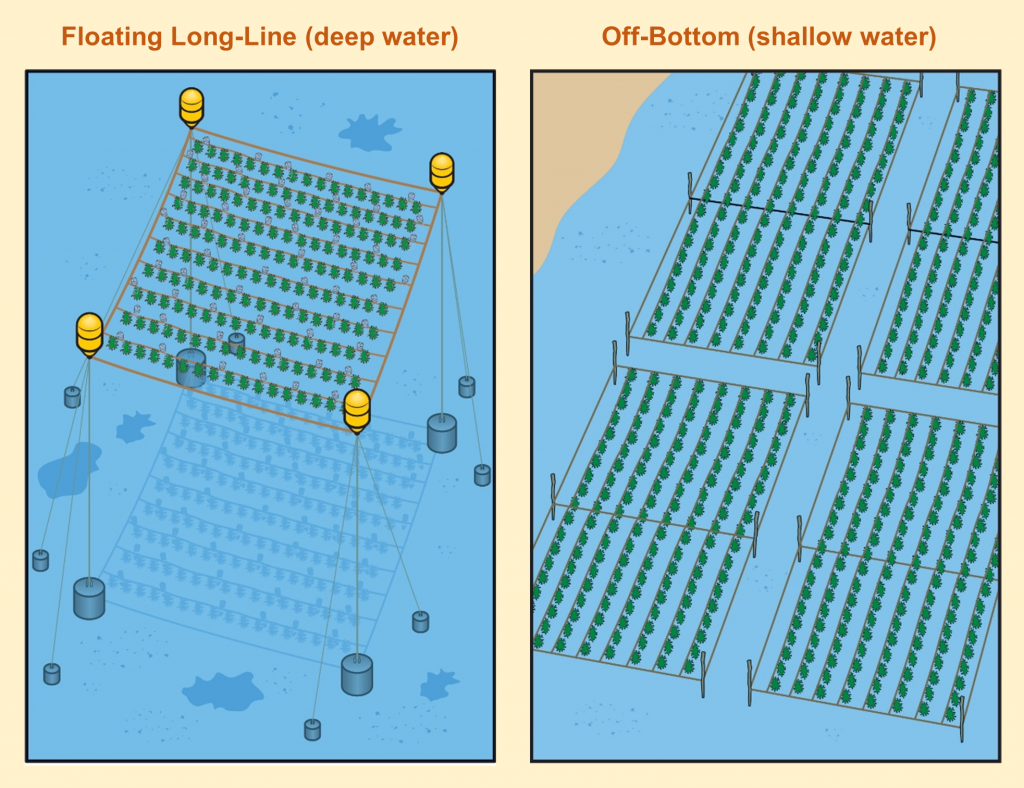Shellfish & Seaweed

Seaweed farms just off of Lembongan Island, Indonesia. Photo © Kevin Arnold/TNC
Seaweed and shellfish are sometimes referred to as extractive species as they help remove and filter out waste and nutrients from the water column. Shellfish are filter feeders and extract organic matter from water while seaweed absorbs dissolved nutrients as part of photosynthesis. When these species are harvested, this waste and nutrients are removed from the water column. For this reason, co-culture of these species with fed species like finfish is often encouraged. In 2018, extractive species production accounted for 57.4% of total world aquaculture production. ref
Seaweed and shellfish aquaculture are profitable industries with diverse market applications:
- Seaweed is a massive and diverse industry worldwide, with farmed seaweed alone worth $11.7 billion annually. ref It is also an important industry globally for many women, rural populations, and Indigenous people. In addition to seaweed like nori and wakame that is gathered and raised for direct consumption, Eucheuma and Kappaphycus seaweeds are grown in tropical regions around the globe for use as a thickening agent for food and cosmetics, among other uses.
In 2018, shelled mollusks accounted for 56.3% (17.3 million tons) of the global production of marine and coastal aquaculture. Oyster and mussel shells can be turned into calcium carbonate or calcium oxide, two chemicals with diverse industrial applications. Shellfish shells are also used in cosmetics, traditional medicines, calcium supplements in animal feed, handicrafts, and jewelry. ref

Harvest from a shellfish aquaculture farm in Maine. Photo © Jerry Monkman/TNC
Culture Methods
Seaweed and shellfish can both be farmed using raft or longline systems and grown on the seafloor:
- Raft systems: In raft systems, seaweed or shellfish infrastructure is hung from lines or nets suspended from a floating wooden framework (a raft). These raft systems are securely anchored to prevent drift with currents or strong waves.
- Longline systems: In a longline system, a length of rope is suspended in the water column and anchored at both ends with flotation devices attached to the rope. Seaweed seed or shellfish culture systems are hung on the rope. Longline systems are preferred in high exposure areas. ref
- Intertidal systems: Shellfish can be grown in intertidal habitats where they are either buried into sediment or grown on stakes, racks, or intertidal longlines. In many cases, intertidal shellfish plots are protected from predators with overlaid mesh that is secured into place. ref
- Off-bottom method: Wooden stakes are driven into the seafloor about 20-25 cm from each other in straight rows. A rope is attached firmly stretched between the two stakes and seaweed seed is tied to the rope.
- Bottom stocking: Seaweed can also be placed at the bottom of a pond and not fixed to the sediment in any way. In more open waters, seaweed can be planted into the sediment or held in place by weights to a sandy bottom. ref

Examples of seaweed production methods. Photo © Colin Hayes/TNC
